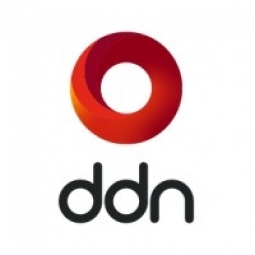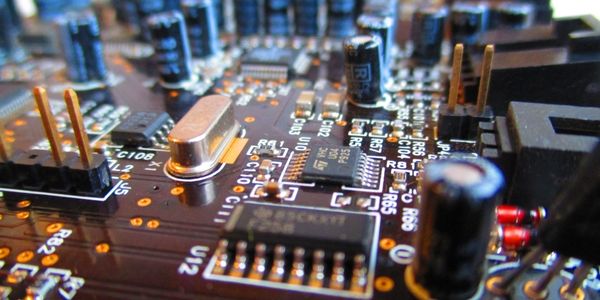公司规模
SME
地区
- America
国家
- United States
产品
- DDN MEDIAScaler
- DDN Storage Fusion Architecture
技术栈
- Autodesk Flame
- Autodesk 3ds Max
- Adobe After Effects
- Adobe Premiere Pro
- Open Source Samba
实施规模
- Enterprise-wide Deployment
影响指标
- Productivity Improvements
- Brand Awareness
技术
- 基础设施即服务 (IaaS) - 云存储服务
- 应用基础设施与中间件 - 数据交换与集成
适用行业
- 零售
- 电子产品
适用功能
- 离散制造
- 销售与市场营销
用例
- 实时定位系统 (RTLS)
- 边缘计算与边缘智能
- 视觉质量检测
服务
- 云规划/设计/实施服务
- 硬件设计与工程服务
- 软件设计与工程服务
关于客户
Kollins Communications 是一家位于新泽西州拉姆齐的公司,提供一站式零售营销解决方案。这些解决方案包括销售点 (POS) 展示视频、店内广告、3D 产品建模和动画,以及完整的视频制作精加工和编码服务。过去十年来,消费电子领导者一直依靠该公司的特殊专业知识,利用高清数字信息和图像来推广其产品。例如,三星电子美国公司与 Kollins 合作制作了数十个视频,重点介绍其电视、音频和白色家电产品的最新功能,这些产品在 Sears、Best Buy、Fry's、俱乐部商店等处销售。该公司不断突破极限,制作出尽可能高的图像质量。除了率先支持最新数字视频格式之外,Kollins 还采用了响应迅速、以客户为中心的业务模式。
挑战
Kollins Communications 是一家提供一体化零售营销解决方案的公司,该公司面临着极其紧迫的期限,需要在四周内为三星电子美国公司制作 20 多个 4K 视频。该公司需要减少在编辑站之间传输文件所需的时间,并需要同时为视频显示器传输三个未压缩的 4K 视频文件。为了满足快速项目周转的持续需求,Kollins 采用尖端技术来加快内容创建工作流程,同时跟上数字内容的爆炸式增长。该公司需要一个高性能存储中心,以加快 OS X、Windows 和 Linux 工作站之间的内容流动。需要极快的性能来支持在 Linux 上运行的高端 3D 视觉效果软件 Autodesk Flame。此外,还需要快速且可扩展的存储来支持在 OS X 和 Windows 上运行的 Autodesk 3ds Max 以及 Adobe After Effects 和 Premiere Pro 软件。
解决方案
Kollins Communications 决定实施 DDN 的 MEDIAScaler,其存储容量为 400 TB,可以根据需要扩展到 PB 级。该公司还采用了 DDN 的专业服务,以确保快速安装和完美运行。DDN 的 MEDIAScaler 利用了该公司的 Storage Fusion Architecture® (SFA) 的强大功能,以及 InfiniBand 连接和 NFS 和 SMB 协议支持,可实现简单直接的访问。Kollins 立即加大了对 DDN 的 MEDIAScaler 的使用,以实现带宽的大幅提升。例如,Kollins 在其关键的 Flame 编辑系统上提取原始素材和渲染最终文件时实现了最高 5GB/s 的性能。该公司还安装了 Mellanox ConnectX-4 适配卡,以支持 100 GB/s 的 InfiniBand 连接。
运营影响
数量效益

Case Study missing?
Start adding your own!
Register with your work email and create a new case study profile for your business.
相关案例.

Case Study
Remote Temperature Monitoring of Perishable Goods Saves Money
RMONI was facing temperature monitoring challenges in a cold chain business. A cold chain must be established and maintained to ensure goods have been properly refrigerated during every step of the process, making temperature monitoring a critical business function. Manual registration practice can be very costly, labor intensive and prone to mistakes.

Case Study
Improving Production Line Efficiency with Ethernet Micro RTU Controller
Moxa was asked to provide a connectivity solution for one of the world's leading cosmetics companies. This multinational corporation, with retail presence in 130 countries, 23 global braches, and over 66,000 employees, sought to improve the efficiency of their production process by migrating from manual monitoring to an automatic productivity monitoring system. The production line was being monitored by ABB Real-TPI, a factory information system that offers data collection and analysis to improve plant efficiency. Due to software limitations, the customer needed an OPC server and a corresponding I/O solution to collect data from additional sensor devices for the Real-TPI system. The goal is to enable the factory information system to more thoroughly collect data from every corner of the production line. This will improve its ability to measure Overall Equipment Effectiveness (OEE) and translate into increased production efficiencies. System Requirements • Instant status updates while still consuming minimal bandwidth to relieve strain on limited factory networks • Interoperable with ABB Real-TPI • Small form factor appropriate for deployment where space is scarce • Remote software management and configuration to simplify operations

Case Study
Digital Retail Security Solutions
Sennco wanted to help its retail customers increase sales and profits by developing an innovative alarm system as opposed to conventional connected alarms that are permanently tethered to display products. These traditional security systems were cumbersome and intrusive to the customer shopping experience. Additionally, they provided no useful data or analytics.

Case Study
How Sirqul’s IoT Platform is Crafting Carrefour’s New In-Store Experiences
Carrefour Taiwan’s goal is to be completely digital by end of 2018. Out-dated manual methods for analysis and assumptions limited Carrefour’s ability to change the customer experience and were void of real-time decision-making capabilities. Rather than relying solely on sales data, assumptions, and disparate systems, Carrefour Taiwan’s CEO led an initiative to find a connected IoT solution that could give the team the ability to make real-time changes and more informed decisions. Prior to implementing, Carrefour struggled to address their conversion rates and did not have the proper insights into the customer decision-making process nor how to make an immediate impact without losing customer confidence.









